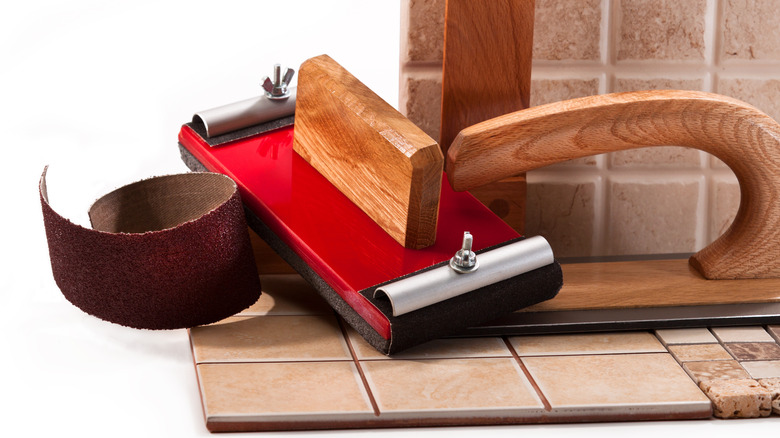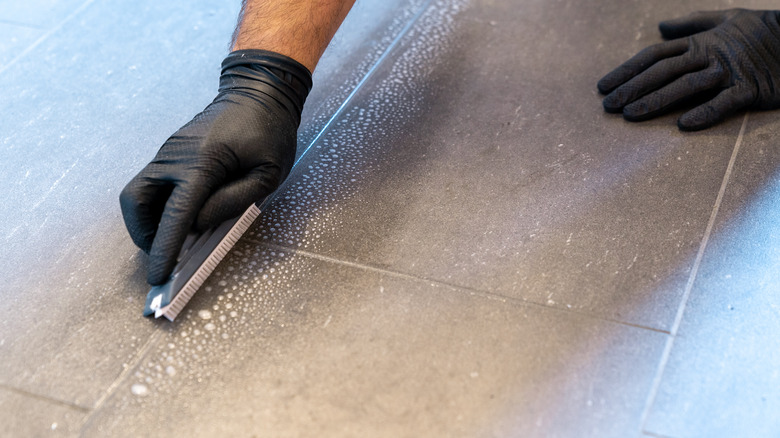The Secret To Sparkling Clean Grout Is Hiding In Your Tool Kit
Keeping grout clean can be a daunting task. As the clock ticks away, grout, unfortunately, turns into a haven for dirt and debris, leading to a dull and less-than-desirable look. Nevertheless, various strategies can aid in sprucing up grout, and one of the top contenders is probably already in your toolbox — sandpaper. This tool stands out because it expertly removes dirt and blemishes without compromising the surface. Sandpaper can gently scrape away the stained grout layer to reveal a clean layer underneath.
If your grout is only lightly stained, it is possible to clean the surface by preparing a paste with equal parts baking soda and water and applying it to the grout lines. Alternatively, hydrogen peroxide works well as a natural bleaching agent. However, in areas that receive more exposure to dirt, such as behind the cooktop or inside your shower, it's better to remove the top layer of grout altogether and then add a sealant to protect it from future staining.
How to clean grout with sandpaper
First, it's important to select a fine-grit sandpaper, ideally 200 or above, to avoid damaging the edges of your tiles. Fold the sandpaper in half, giving you a thin abrasive edge, and carefully sand along your grout lines. Be sure that you only remove the top layer of dirty grout — if you sand too deep, the edges of the tiles will be exposed, causing further issues. The new grout underneath will be bright white, so for consistency, you may need to do the whole area rather than a few small patches.
Once you've sanded all the necessary grout, vacuum away the dust, wipe the tiles down with a damp cloth, and then buff them with a dry microfiber cloth. To protect the grout lines from further damage, immediately apply a grout sealer that is specific to the tiles and type of grout you have. In addition, wiping the tiled surfaces down after each use will go a long way to prevent stains and deterioration in the future.
Other useful tools for cleaning grout
While sandpaper is a helpful tool for cleaning grout, various other options exist within your toolbox. If you have a large area to cover, a mini orbital sander with a small PSA sanding disc can help speed up the process. Anything with a pointed edge, such as a flathead screwdriver, is a great choice for working in corners or behind obstructions. A grout brush, which has stiff bristles explicitly designed to clean in thin gaps, can also be used alongside a cleaning solution to scrub away dirt and stains embedded in grout lines.
Regular upkeep is vital to maintaining spotless grout. Daily sweeping or dry mopping can effectively remove loose dirt, and weekly mopping with a gentle cleaner can further ensure cleanliness. Prioritizing preventative measures, such as being mindful of high-traffic or water-prone areas, also aids grout preservation. Placing mats or rugs in these areas can prevent water seepage into the grout. Adhering to these maintenance strategies will help your grout retain its fresh appearance over the years to come.


